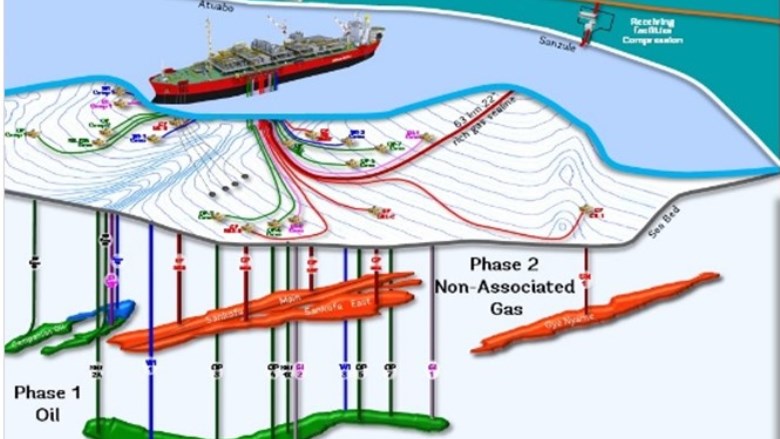The Sankofa gas project was brought to the World Bank in 2014 during challenging times for Ghana and the global oil and gas industry. The Government of Ghana was struggling with macroeconomic shocks partly caused by challenges in the power sector. Constraints on hydropower generation assets and delays in developing domestic natural gas resources were making Ghana increasingly dependent on expensive and imported liquid fuels for power generation. To maintain power tariffs within affordable levels, the Government had provided more than half a billion dollars of fuel subsidies to the power sector over the previous years. Those subsidies were putting significant pressure in the already weak public finances. The oil and gas industry was also struggling due to the drop in oil prices from $100 a barrel down to $50 at the end of 2014. International oil companies were reassessing investment decisions and many had already started cancelling or shelving projects around the world.
Both project stakeholders, the government and private investors, needed the project in their own way. The Sankofa project entailed the integrated development of oil and gas fields in Ghana. The economics of the project had shifted from just oil to oil and gas as a result of the sharp decline in oil price. Indeed revenues from gas were expected to be larger than revenues from oil. While oil could be exported and sold on the international markets, gas reserves were not large enough to make gas export economically viable. Therefore, the gas production had to be sold on the domestic market to be competitive. The interests of all the stakeholders were aligned as the availability of reliable gas supply for power generation was key to the long term sustainability of Ghana’s power sector.
To undertake the $7.9 billion investment required to develop the project, the private sponsors needed the state-owned GNPC (Ghana National Petroleum Company) to commit to offtaking the entire natural gas production for a period of 20 years. However, GNPC lacked a track record of honoring such level of commitments and Ghana’s sovereign credit rating was low (B-). In that context, a credit enhancement mechanism was needed. This is where the World Bank and its guarantee instruments were able to help.
Through an innovative financial engineering structure, World Bank guarantees of US$700 million backstopping defined government payment obligations from GNPC provided the comfort that the private sponsors needed undertake Sankofa gas project. Thus, World Bank guarantees were able to leverage $7.9 billion private sector investment into Ghana’s upstream infrastructure. The revenues from this Project to Ghana are estimated to be at least US$10.5 billion in nominal terms and US$15.5 billion, when taking into account the fuel cost savings which will be achieved by the power sector by replacing liquid fuels currently used with domestic natural gas for up to 1,000MW of power generation capacity.
The World Bank’s convening power and honest broker role were critical in the structuring of the guarantee support. The investors took sufficient comfort from the World Bank’s presence in Ghana’s energy sector as well as its long standing country support program to invest in this Project. The World Bank, acting as ‘Honest Broker’, successfully liaised between the private investors and Government stakeholders to facilitate an innovative financial structuring with limited sovereign support.
At a time when oil companies had shelved $200 billion of projects around the world, the intervention of the World Bank made possible this $7.9 billion project Ghana. This project will have a transformational effect on the country, its economy and the power sector for the next two decades.

